About this blog: In this Sapa Travel Guide, we tell you about the best things to do in Sapa, including easy day hikes, best places to eat and shop at, unique flora and fauna and quaint villages located at the folds of Fansipan mountain range. Unlike the rest of Vietnam, Sa Pa features a unique tribal culture and age old customs of Vietnam. A slow paced life blooms in full in harmony with the mountains! Sa Pa is one of the least talked about destinations of Vietnam!
While exploring Vietnam, most people are busy exploring the chaos of big cities like Hanoi and Ho Chi Minh City, trace antiquity at Hoi An and Hue, and soak in the nature’s treasure trove at Halong Bay. Very few actually take the night train to Sa Pa and reach the north western border where Vietnam shares border with the Chinese dragon.
For those who do, a trip to Sa Pa await a lifetime of memories of exploring distant hamlets housing tribal civilization safeguarding its antiquity.
Pin it for later!
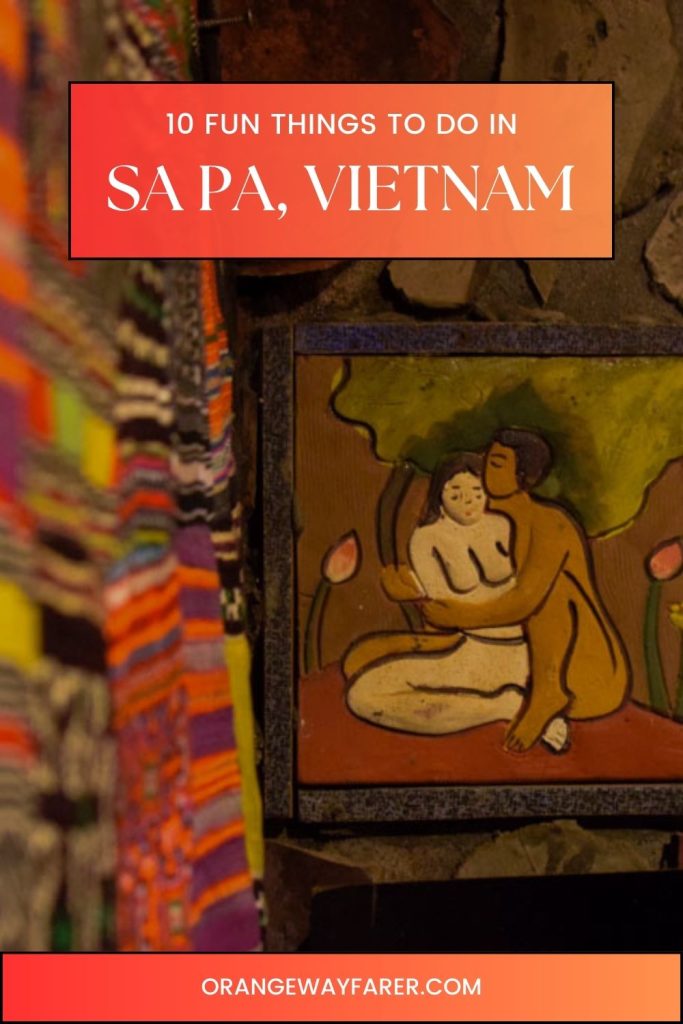
Sa Pa Tourist Activities at a Glance
- Explore the unique lifestyle of the Hmongs, a distinct tribe from the heart of Fansipan range.
- Multiple day hikes or long range hikes to the Fansipan peaks
- Eat exotic meat in Sa Pa (think deer or horse meat).
- Purchase souvenirs like indigo skirts or Hmong bags from the night market of Sapa.
- The night train to Sa Pa is a must do from Hanoi.
- Sa Pa is a photographers’ paradise with ripe paddy fields glistening under the setting sun during late summer months.
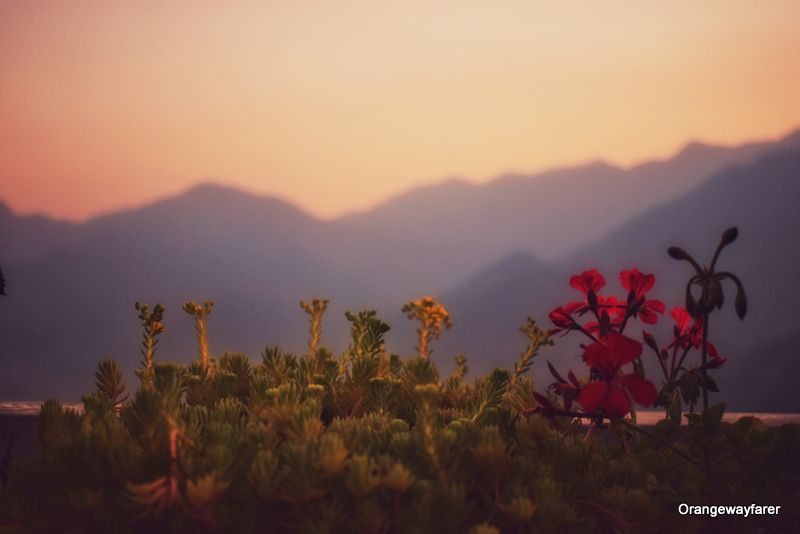
The terraced rice plantation of Sapa dazzles in shades of neon greens to emerald to dark forest. At the advent of the dry season, they turn lifeless and barren. Colour is the key to grasp the rhythm of Sapa’s slow unhurried life. It is the tourists that bring busy footsteps to the mountains. To disrupt the rhythm, to see it all and feel it all in a couple of days.
Sapa is more than a tourist spot. It was a summer escape for the western colonists who often used to escape the plainland heat. I find semblance with the stories of Darjeeling, Shimla from India. The British ran at the advent of Summer. So did the French in IndoChina (Vietnam), They ran to Sapa.
Sapa: Home of the Hmongs
What to know about the Sapa residents before you book a holiday in the mountains?
Sapa is home to the Hmong tribes. They say the dark skinned Hmong mountain tribes are fierce fighters who bore the brunt of Chinese aggression at the North Western border of Vietnam. There are a handful of other ethnic minorities residing at the distant mountain hamlets of Sa Pa, most of whom you would not meet in the short visit to this offbeat mountain town of North Vietnam.
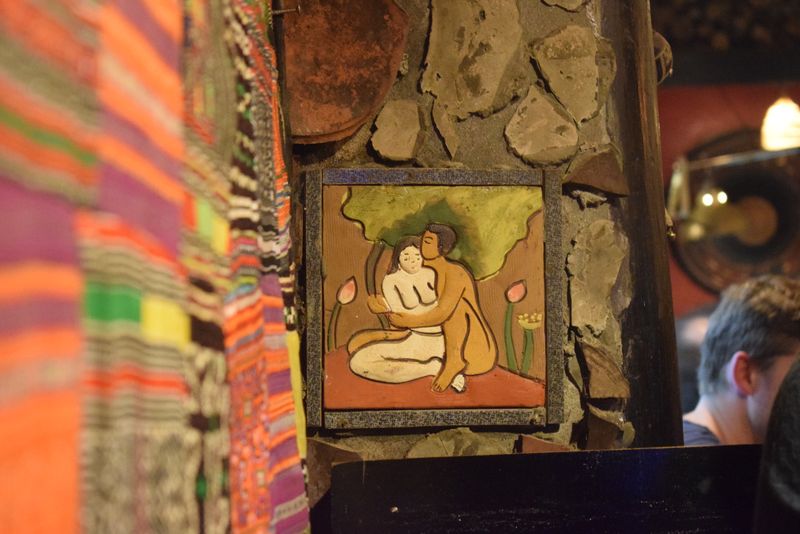
The majority of the ethnic group at Sapa are made of Hmong group while you may find the Dao, the Tay and the Giay people at the morning market of Sa Pa town. Morning markets are beautiful features of South East Asian countries. I got a first glimpse of a thriving night market in Luang Prabang, Laos.
The further you move away from the town of Sapa, you are likely to rest at a local village for the night. This is an opportunity to interact with the locals of the ancient mountain ranges of Hoang Lien Son.
The original Sapa night market used to take place twice a week. However with increased tourist footfall, every day is a night market day at Sapa Town. The market has been inundated with Chinese made generic travel souvenirs. However, the discerning eyes will find the most elaborately woven pieces of clothing tribes bring from the folds of the hills. It takes months to create one piece of clothing.
One of the best ways to experience local life at Sa Pa is to stay at the homestays run by Hmong people, witness natural Indigo and hemp dying process that predates centuries of village lifestyle, understand the intricate relationship between man and nature. Tribes of Sa Pa show their distinct culture and identity through the weaves of Indigo skirts. Each tribe has their unique style of weaving techniques.
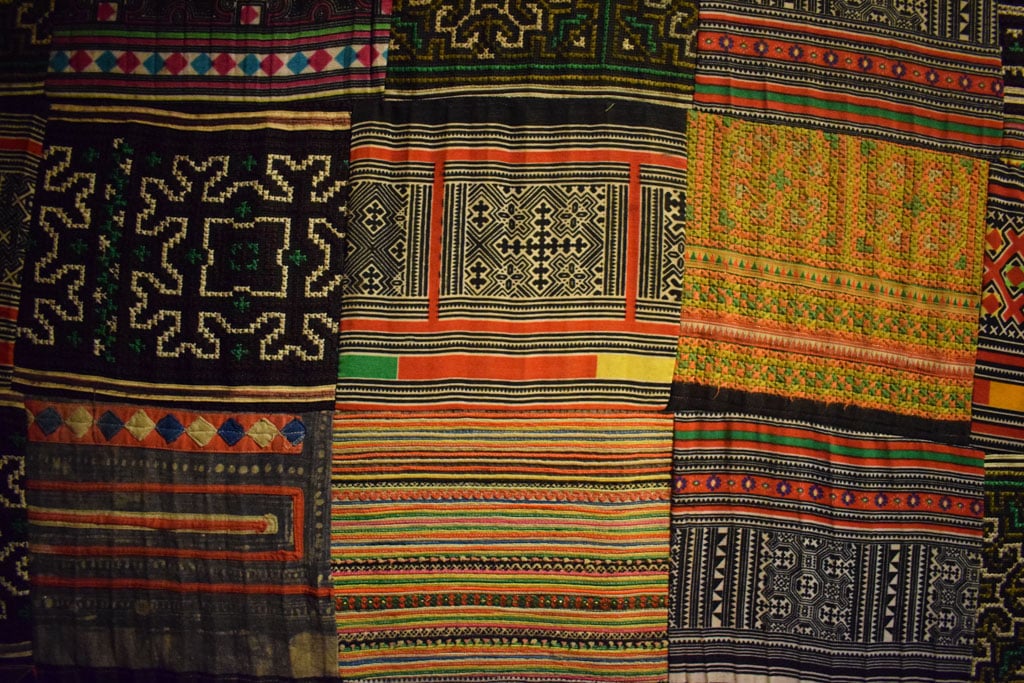
Over past few decades, homestays have mushroomed at Sa Pa, however not every Sa Pa homestay will offer you decent service. I urge you to do your part of research before booking a homestay at Sa Pa.
Tourist footfall has drastically increased to hundreds of thousands from a mere 500 since the late 90s, but Sa Pa residents remain one of the poorest economic group in the country.
Also read: 3 days at Manas National Park & Culinary adventure with the Bodo tribe!
3 days Itinerary in Sa Pa
Following is a suggested itinerary for your trip to Sa Pa. You can surely tweak it a little and fill in with adventures you deem fit (more “things to do in Sa Pa” content in next section).
- Day 1 in Sapa
Assuming you reach Sa Pa by the night train from Hanoi, you reach Sa Pa city center by 9 am. Check in at your hotel at he City center and freshen up. If it is a weekend, visit the local market. Various tribes from the mountains bring their produce and unique art and craft.
By afternoon, start a hike to the Cat Cat village. More than a village it is a living museum of Hmong culture. It is touristy but it is where you can truly experience the Hmong way of life. A few real Hmong families stay in the nearby area and you will enjoy seeing everyday life unfold.
On the way back, you will see a sunset sky drape the Fansipan range. End the stay at Hmong Sisters and their craft beer.
- Day 2 in Sa Pa
This is a whole day in Sa Pa where you can rent a bike and visit the loop towards Ha Giang (4 hours further north). It is what Sa Pa used to be before the tourist influx began to shroud the clean air of Sa Pa.
Each turn of the road will present you picturesque landscapes. However Ha Giang Loop is not recommended for beginner riders. You may also take a bus.
Alternatively, you can do a few small hikes around the Trom San pass and there are multiple “Instagram photo spots” in Sa Pa along the Trom San route including a new glass walk. There are local villages, paddy fields and chances of spotting abundant wildlife as well.
- Day 3 in Sa Pa
This is the last day in Sa Pa when you take the Fansipan Cable Car and reach the summit of of the tallest peak in Sa Pa. On the way back, you can take a look at the Lao Chai village. You can take the night train to Hanoi and go back to the hustle of the city with a perfect memory of three days in Sa Pa.
I recommend a visit to Sapa for at least 3 nights. Assign each day of your stay for hiking the famous trails of Cat Cat village and Lai Cao to see the terraced paddy fields. For the last day, you can explore the touristy part of the town, visit the Cable car to Fansipan mountain and venture into the deep of the rural homestay for a more wholesome experience at Sa pa.
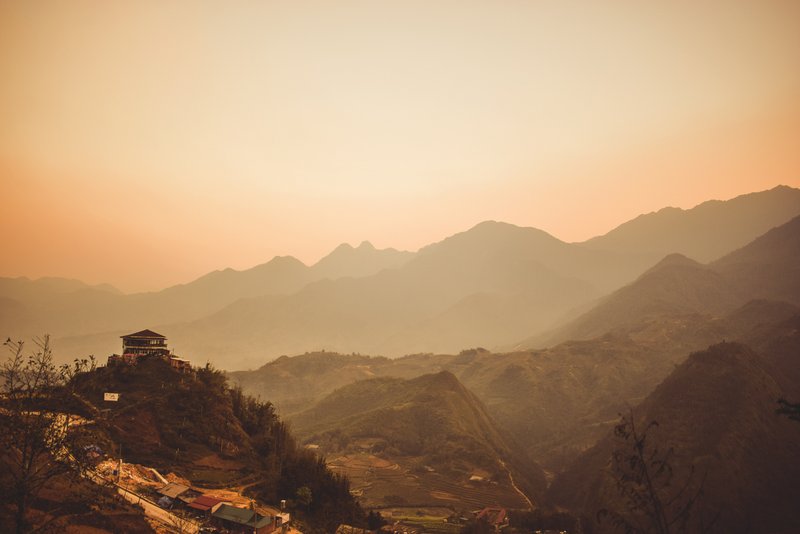
Also read: Things to do in Mirissa, Sri Lanka’s most beautiful beach town!
Adventurous Things to do in Sa Pa
Many tourists visit Sa Pa and spend their days hiking multi day trails along the Fansipan range and staying with the Hmong homestays. The Hmongs are some of the friendliest hospitable people on earth. You experience this more as you go drift further away from the city.
The closer you choose to stay near the City center, you will see Sa Pa has turned into a tourist trap. However, it is also one of the few cities in Northern Vietnam with relative comfort and luxury of modern world.
Please remember Sa Pa gets really cold in winter and at night. It is important o secure a hotel stay that will keep you warm.
Hiking the last of Himalaya in Indochina- Summit Fansipan Peak
They call Fansipan mountain range is the roof of Indo China. Making a distinct border between Vietnam and China, the last trail of this Himalayan mountain range boasts of the highest peaks in the region.
Many take the epic hiking trail to the peak of Fansipan range.
It is a moderate trail that spans from 2 days to 6 days and ascends more than 2000 meters. You do not need any porter or guide to do this hike. Follow the well laid out Tram Ton pass to ascend to the summit of Fansipan peak (3143 meter).

Best time to hike the mountain is the months of spring (March, April) and autumn (September, October). Start early of the day. As you climb higher, the weather changes drastically as pregnant clouds near the verdant valleys.
While Fansipan is one of the highest peaks in the region, the climb up is not as tranquil as it seems, especially for all the construction debris thanks to the 2016 built cable car clanking and tourist attractions close to the summit. The pagodas. The commercial fast food joints. The summit is not wild and natural and windswept.
On a sunny day, Fansipan can be seen from the town of Sa Pa with a peak covered with snow glistening under the sunshine.
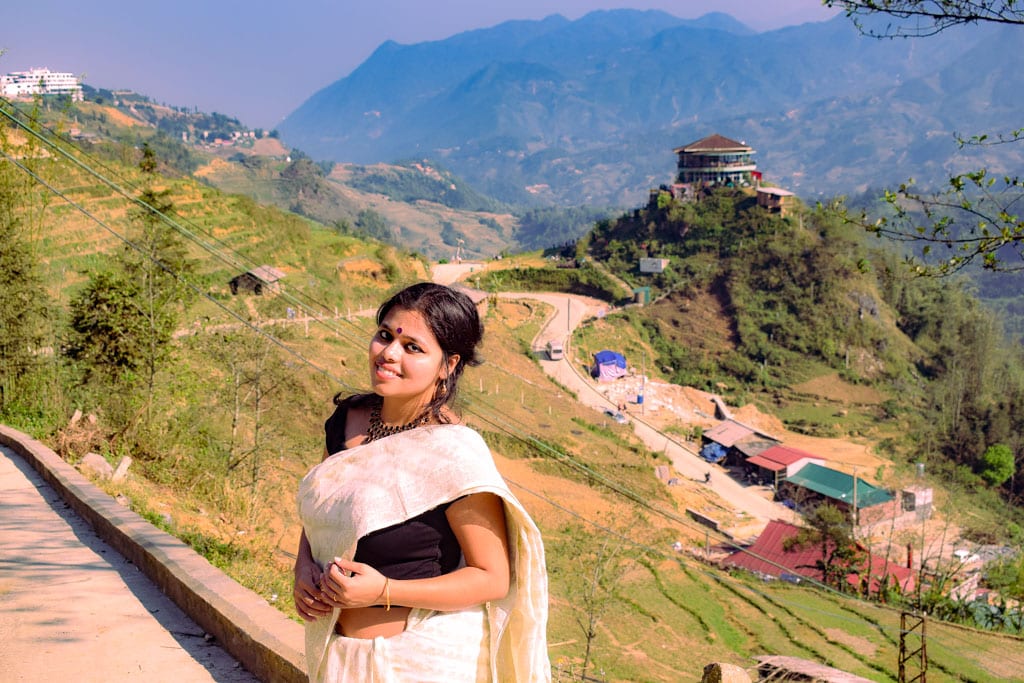
Driving the Scenic Tram Ton Pass
Even if you are not reaching the summit the Fansipan peak, I highly recommend a visit to the Tram Ton Pass. The winding mountain highway between Sa pa and Lai Chau will reward you with iconic views of the Fansipan mountain range on a clear sunny day.
There are a numerous view points on Tram Ton Pass, including waterfalls and some of the highest points on the mountains. Rent a bike from Sa pa and drive down the road even if you do not make it all the way to Lai Chau. Tram Son Pass trail is the starting point of the Fansipan hike. If you do not wish to climb the summit, you can visit he paved roads along Tram Son Pass with many view points. This activity requires a day.

We had reached the Chu Va view point through Tram Ton Pass and hiked a bit by our own along the walk way. Entry to Trom Ton pass is for about 70,000 VND and you will be better off (though not mandatory) with a guide. Look for colorful orchids and dwarf bamboo plants in this hike.
Sa Pa’s verdent valleys get swept across with seasonal blooms of cherry, peach and even Broccoli bloom in spring-summer months. Sa Pa rose is a unique bush that shows you a slightly flatter version of the famous flower.
There are almost 40 species of century of rhododendron flowers that grows on Fansipan mountain range, “Roof of Indochina”.
The Rice paddy fields are home to various kind of rat-snakes and field frogs too. For birding enthusiasts, keep an eye for the species like Streaked and Spectacled Barwings, Blue-winged, Chestnut-tailed and Red-tailed Minlas, Black-headed Sibia, Vinous-throated,Red, White and Black Laughingthrushes, Ashy-throated and Golden Parrotbills, Mrs Gould’s Sunbird and Black-headed Greenfinch.
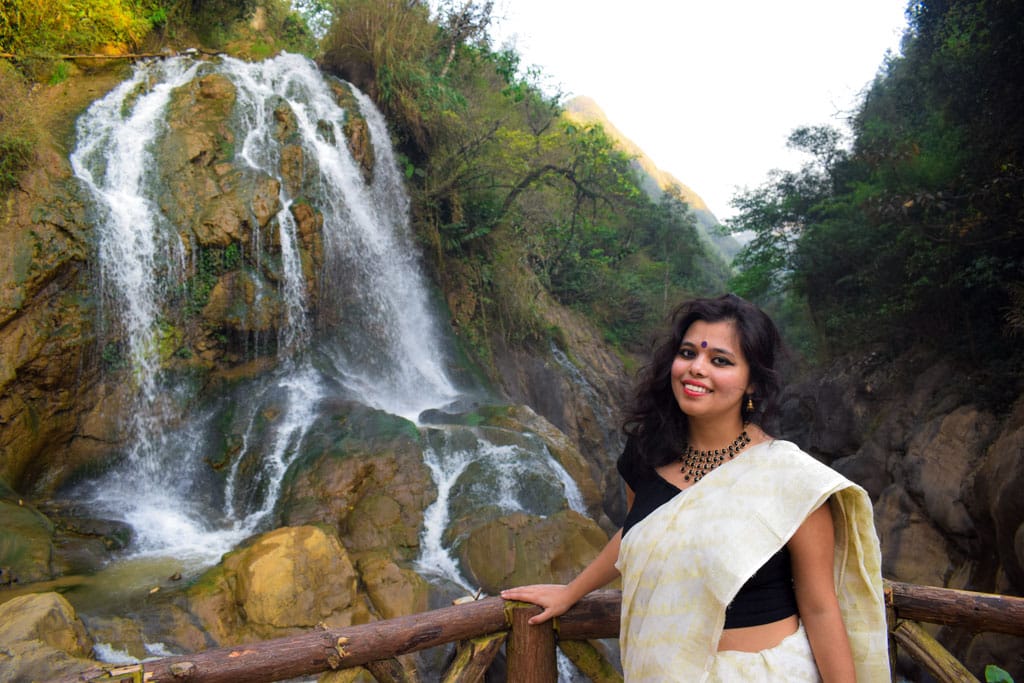
Also read: Most beautiful destinations in Italy
Visit the Silver and Love Cascades- Day trips from Sa pa
Along the Thom Tan Pass, two famous waterfalls are located, Love and Silver.
These flowing miracles await your discovery in the verdant shroud of the cloak of Sapa’s highlands.
Fall in love with the Silver Waterfall’s melodious murmur, its completely clear waters flowing down from dizzying levels, skipping over the rocks before giving up to the quiet pool beneath. The sheer force of the waterfall, which appears different from the quietness of the surrounding lush greenery, causes a sensational situation that leaves you speechless as you wonder about nature’s terrific scene.
Silver waterfall is located at 30 minutes ride from Sa Pa city center. You need to hike for roughly 15 minutes to reach the falls. There is minimal charge of 20,000 VND for entry. At the entrance to the fall, many fruit vendor sits with basket full of juicy tropical yields. Do not forget to taste some. Try the hard boiled eggs which are cooked in a strange way.
Not far off, the Love Waterfall recounts a more personal story. It embodies a local legend, a heartfelt story of a fairy and a woodcutter, giving graceful appeal to it. Its delicate outpouring carves a tranquil haven through the thick foliage, welcoming you to pause and absorb harmony.
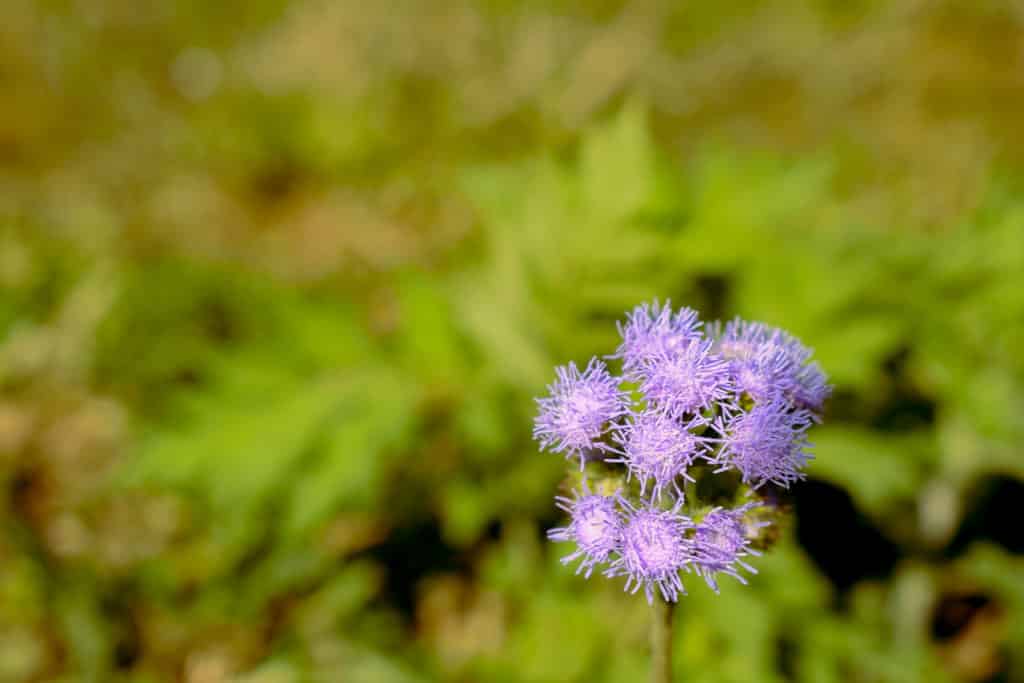
Local folklores say one of the seven fairy sisters cried her heart out for the love of O Quy Ho, the lover who brought spring in the valley with his incredible tune of the flutes. The fairy became a bird leaving behind a never ending legacy of love that echoes against the wall of Love waterfall.
Unlike the waterfalls of Vagamon in Kerala, I would not recommend taking a dip in these falls. Sa pa is pretty cold thanks to its high altitude. During rainy months, these falls are foggy. During dry winter, water level is negligible. Bike parking is available near the area.
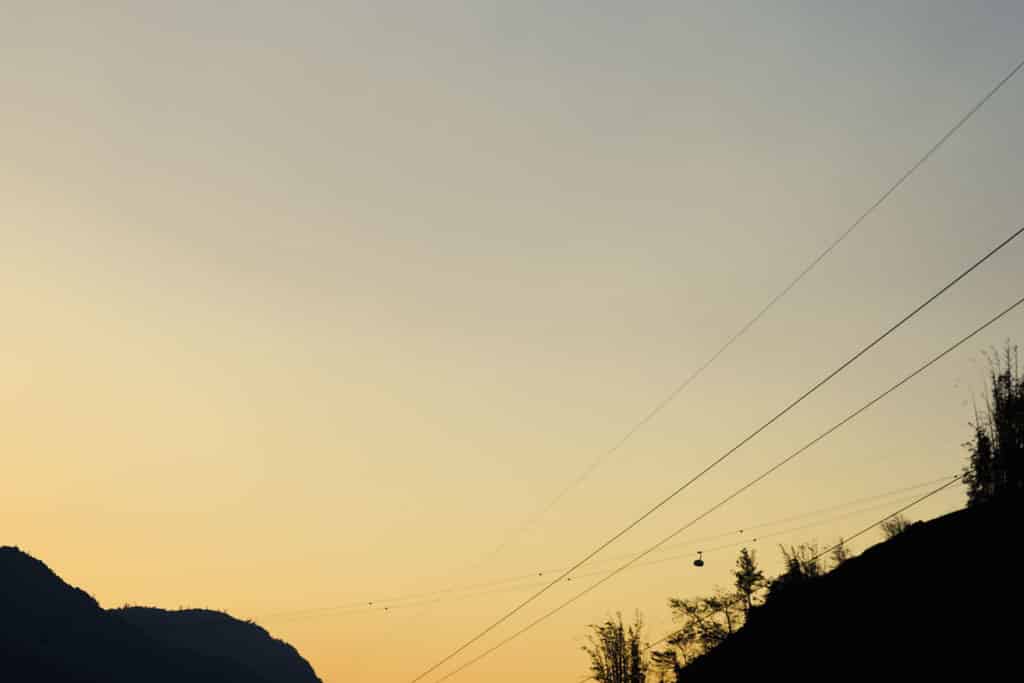
Reach the peak of the mountains with Fansipan Cable Car
The Fansipan Cable car is Sapa’s answer to Langkawi’s cable car across the verdant valley.
Without a strain on your hamstring, the new age all glass cable cars will transport you to the top of Fansipan in a quarter of an hour.
The Fansipan Cable car starts from the Fansipan Legend tourist region in the center point of Sapa town and reaches the top at Fansipan Cable Car station. From that point, you have to ascend 600 moves to arrive at the mountain. Fansipan Street is a long twisting street with a lofty slope situated in the center point of town. The view of mountains, valleys, and some rice terraces becomes apparent after the long row of shops. In addition to trekking and visiting villages, this is one of the best activities in Sapa.
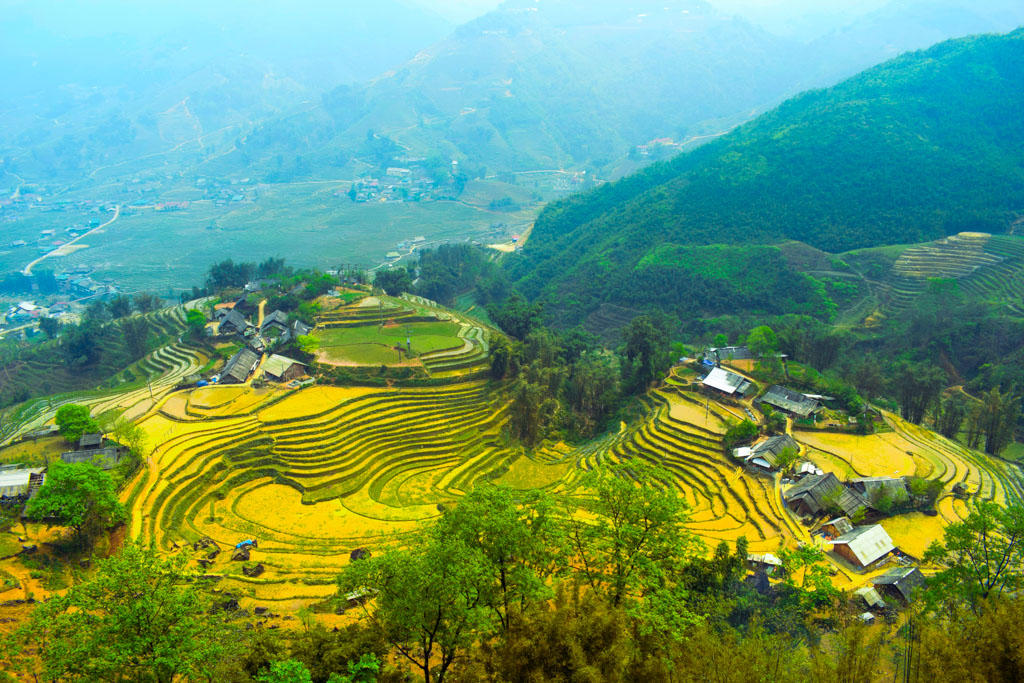
Many argue it has ruined the tranquility of the mountain top, a huge mountain at that. I tend to agree with them but I can not deny the fact that this cable car will allow you to view some of the finest scenic route along the journey at a distant part of the world. The mountain top is getting a complete facelift with many tourist activities like a pagoda, a huge staue of Maitrayee Buddha, snacks counter and restaurants.
Fansipan Peak now officially belong to the tourists with the advent of the cable cars!
Cost of Fansipan cable car: INR 2,171 (USD 30) for adults, INR 1551 (USD 15) for kids. It is open from 7 am to 7 pm.
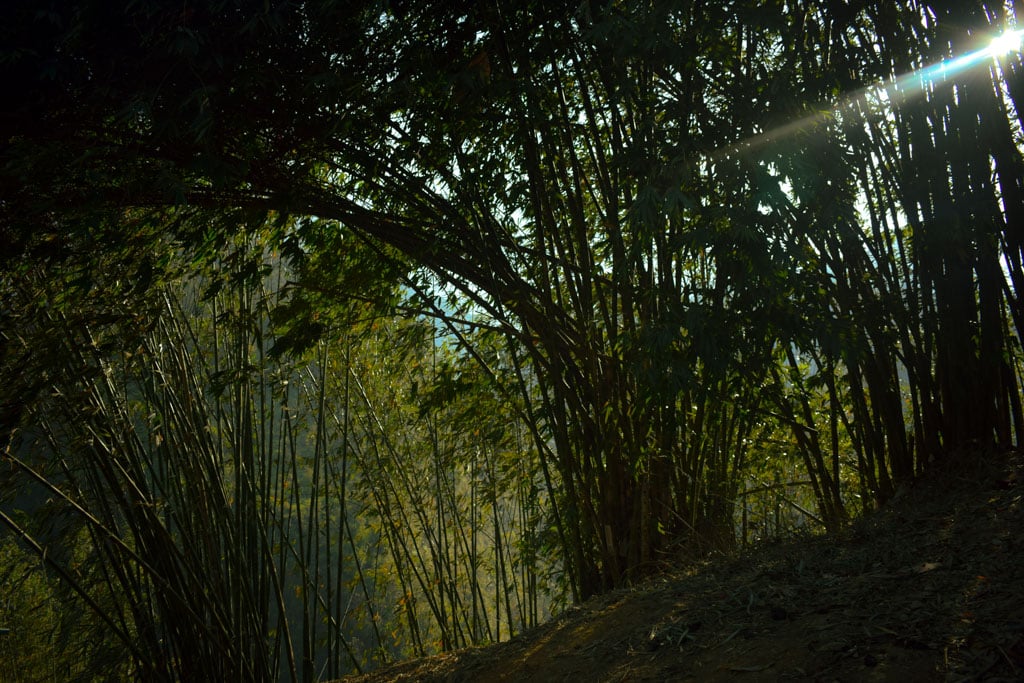
Also read: How to visit Zuluk-the silk route of North east India!
Other Attractions Along the Trom San Pass, Sa pa
Since the route is extremely scenic and it is a long stretch between two bordering districts, there is an array of activities and picturesque spots developed for tourists.
The O Quay Ho Pass View Point is a remarkable stop during sunset. Rippling mountain ranges touch the horizon.
10 Minutes from this view point, you will come across a spot named, Lonely Tree. Taking up after the tree in New Zealand, there is one tree dangerously plunging to the valley.
The Glass Bridge of Sala is another new attraction in the area. It charges a 500,000 VND entry fee (20 USD) and lets you walk atop the infinite emptiness of Fansipan range.
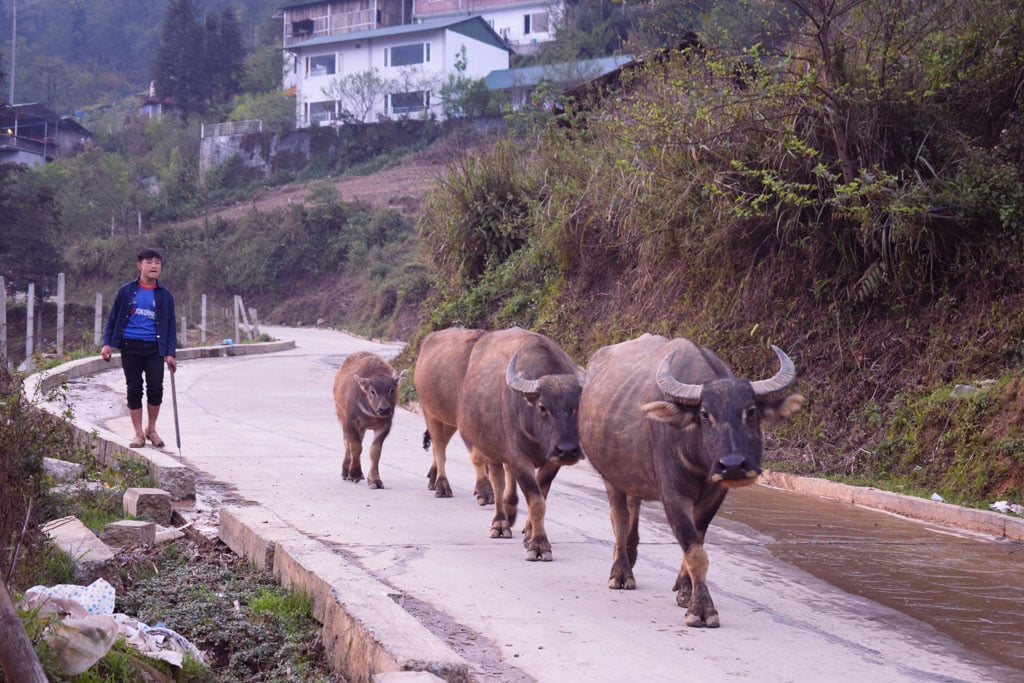
Experience rustic rural life at Cat Cat village
Cat Cat Village is a Hmong village housed right at the heart of the Muong Hoa Valley and Sapa.
From Sa pa city center, it is an hour walk to Cat Cat village. You can also rent a bike which wont take more than 10 minutes.
At Cat Cat Village, you can see the Hmong culture and customs up front, with its open-air museum-like village loaded with wonderful traditional houses, handiwork shops, and a wide range of conventional apparatus they use to make life in the mountains somewhat simpler. The town is enormous, and you can appreciate many little hiking trails around and ride the poor horses to explore some of them (or not). There is a fee of VND 25,000 charged for entering the village.
At one corner of Cat Cat, you have Sin Chai village set up. The giant Cat Cat waterwheels are located by the old school wooden huts. At night, the village is lit up with cute lights. The Tien Sa Cultural center hosts many cultural activities of the Hmong people, especially during festival. There are a number of small waterfalls around the village and houses serve corn wine and sell indigo fabrics.
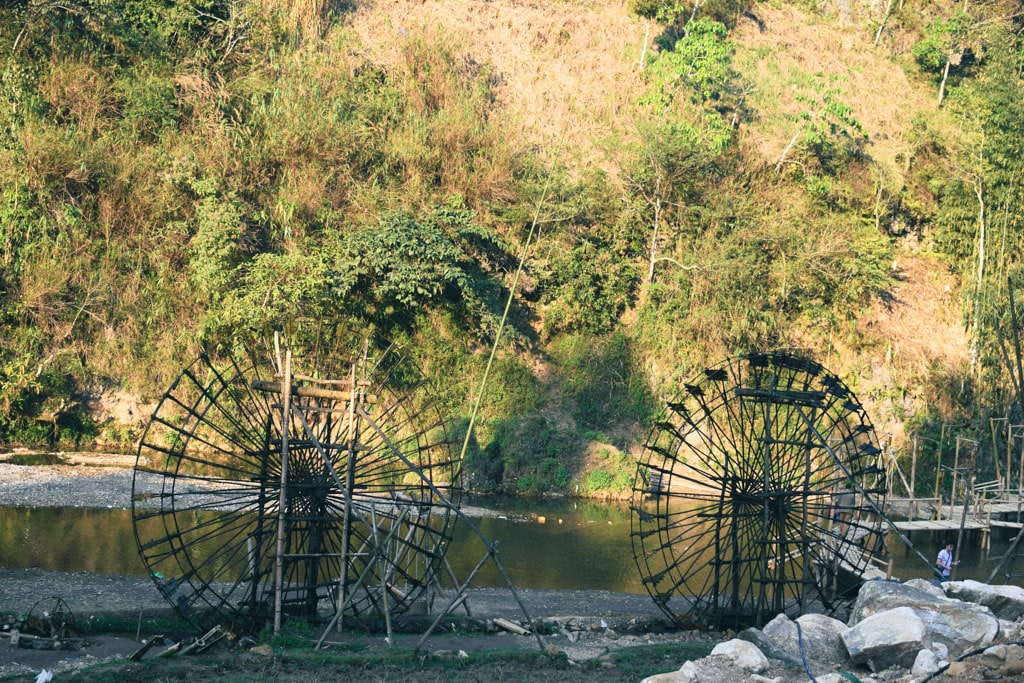
There are many wooden huts which hosts visitors as homestay option. Cat Cat is a scenic village which reflects a romantic version of Hmong lifestyle. You do not have to believe all of it but you sure do get a gist of Hmong life that perfectly syncs with nature.
On the way back from Cat Cat, I decided to walk. As we approached the city, a shepherd boy appeared with his herd of water buffalos. Like the rest of South East Asia, Vietnamese hardly use bovines for dairy product. It is all about meat. I wonder how and when all these water buffalo reached the high terrains of Sa pa hills!
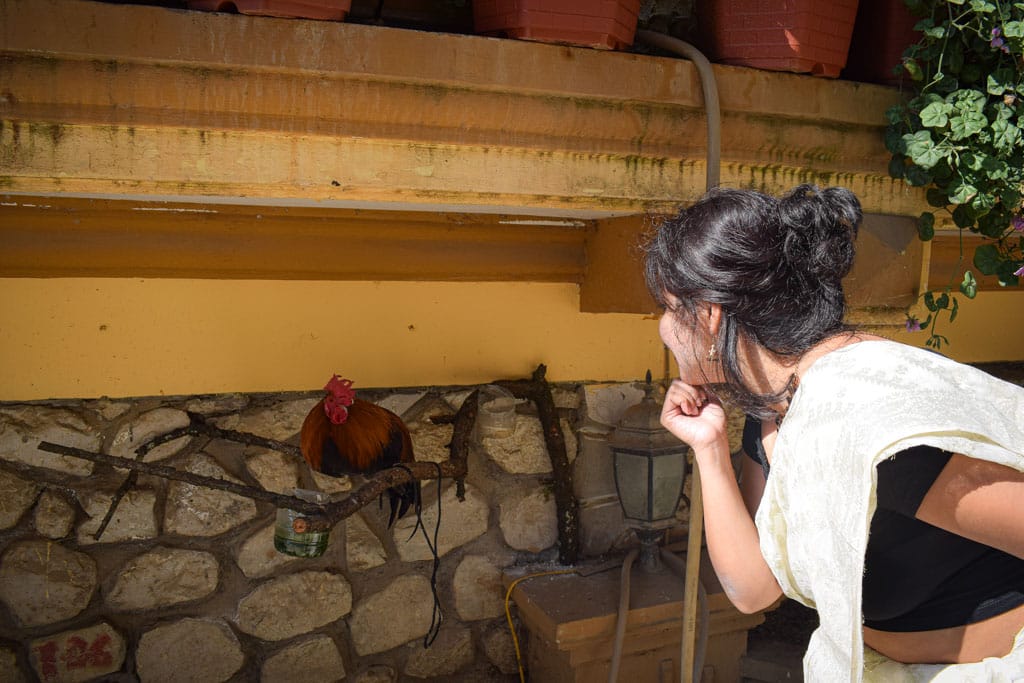
Also read: Things to do in da Lat in 3 days
Try the Local Delicacy of Sapa- Horse Hot Pot
If you travel for food, then trying thang co or horse meat stew is quite possibly the best thing to do in Sapa. It’s a customary Hmong hot pot dish made with various kinds of meat like hamburgers, pork, buffalo and goat, however, the basic ingredient is horse meat and many herbs to add to the flavors.
People from the Hmong ethnic gathering have used horses for transport for ages. They butcher the horse for its meat when it is too sick or old to work. It is without a doubt one of the more interesting dishes throughout Vietnam, not just in Sapa.
Stewed in a huge pot with up to twelve distinct flavours, they utilize all aspects of the horse like its liver, lungs, digestion tracts, and kidneys so nothing is wasted.
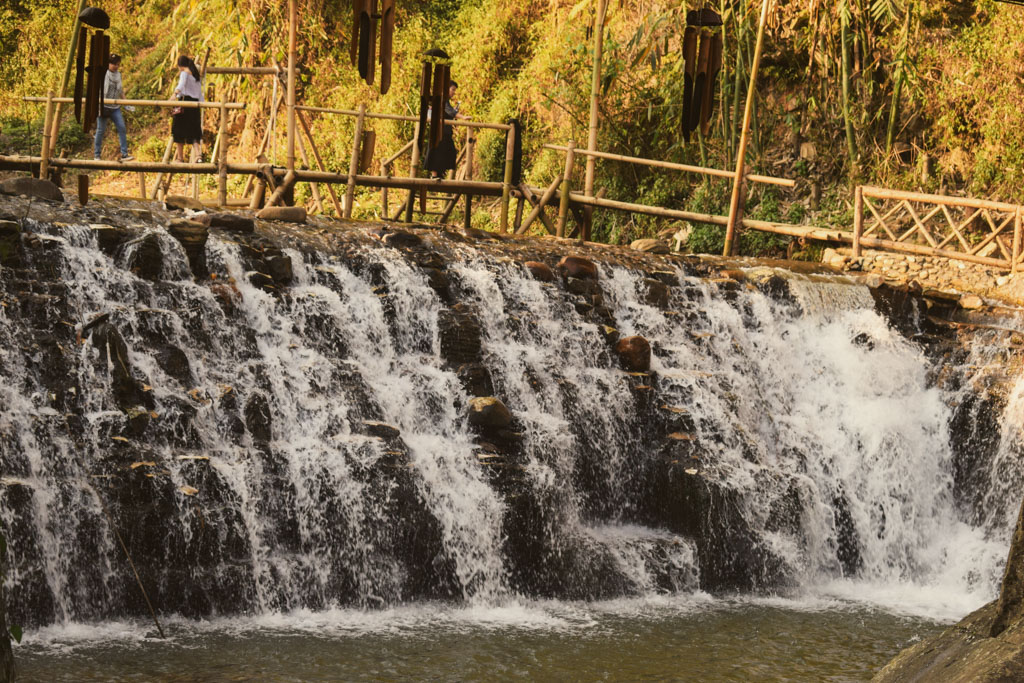
Also read: In 20 pictures, revisiting the antiquity in Egypt
Offbeat experiences in Sa Pa- Ta Phin caves
Just 12 Km away from the city center (30 min by a ride), you will come across the mystic Ta Phin caves where thousand years old stalactites and stalagmites have shaped mystic formations.
Locals have used the Sa pa caves for centuries for centuries to celebrate communal meetings and festivals. The caves of Ha long Bay steal the limelight so very less people actually head to the caves of Ta Phin. You need to crawl and get dirty to enter inside the caves and please do not forget your torches.
Entry fee is 40k VND and you need around an hour to see it all. Close to the cave stands the ruins of an old French Church.
The Ta Phin caves are a lot like the cave system of Halong Bay, but with much less tourist footfall. Just like Ninh Binh is a landscape dotted with iconic limestone karsts of Halong bay, but not on the seascape!
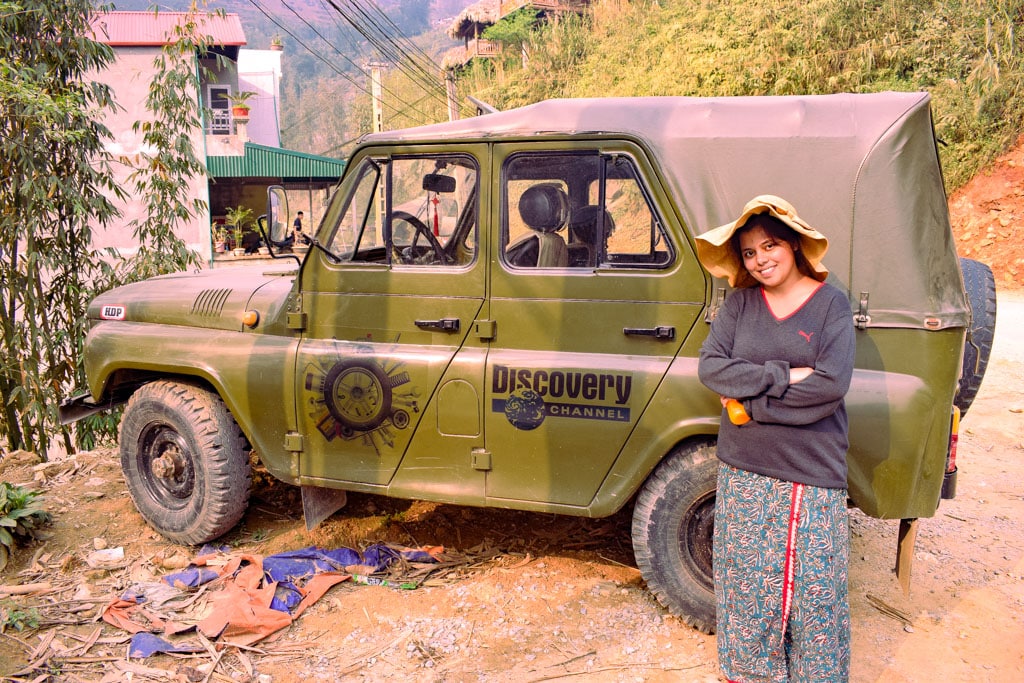
Exploring in and around Sa Pa City Center
Sa Pa city center is a busy town where the night train gurgles out day trippers and tourists.
It is only wise to leave the city as soon as possible and head towards the interiors.
Located at 20 minute walking distance from the Sa pa lake is Ham Rong Garden of Sa pa. It is curated on the fold of Dragon’s Jaw mountain of Sa pa with a unique shape of the peak. Ham Rong is famous for orchid bloom during spring. It takes a couple of hours to complete the entire trail which starts next to the Sa Pa church.
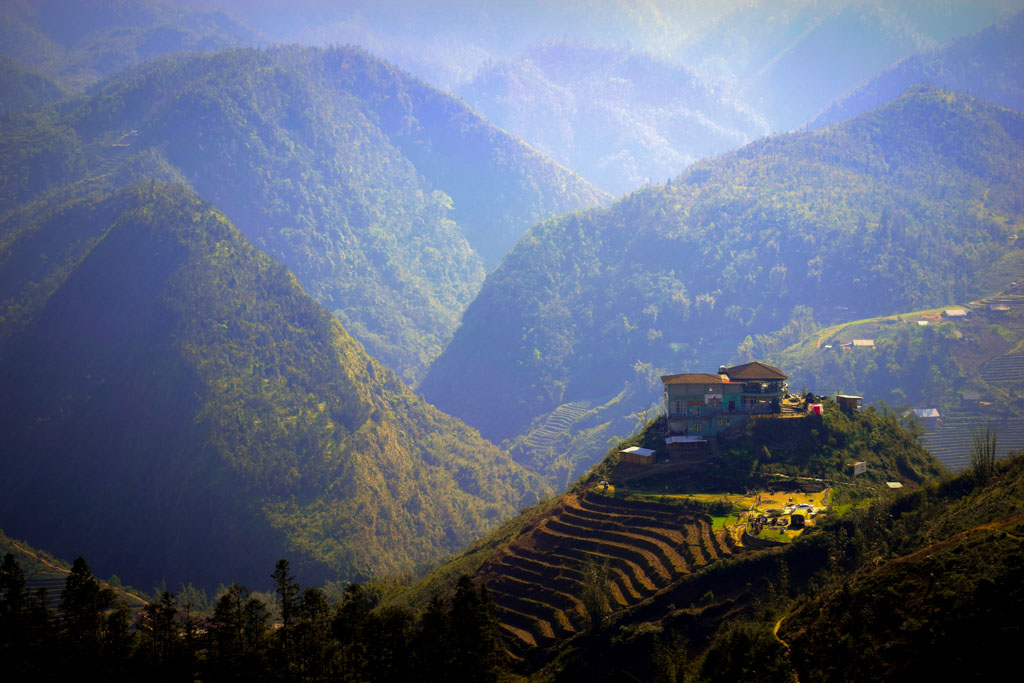
Sa Pa Night Market for Unique Local Experience (& Shopping)
You have not really explored Sa pa until you have been to the night market of the mountain town. There are lots of markets in Sapa and its surroundings that you can visit. These markets are utilized by the neighborhood hill tribes to exchange their locally grown food. This is also a meeting point for the young people of distant villages. Men and women meet here and many love stories unfold in the folds of the mountains. But we are tourists. What do we know of them?
While the Sa pa market was once famous for indigenous crafts and distinct food, now it is awashed with pieces of clothing, brocade, ornaments and even phones and chargers, made in China. The livestock section of the market is one of the most fascinating areas. Here you can see merchants inspecting animals closely before closing a deal.
The most well-known market around Sapa is the Bac Ha market / Love market (held each Sunday), yet there are numerous different markets you can visit. Old tribal women wearing Indigo skirt and baby tied to their chests dominate the trade.
More than a tourist center, the Sa pa market acts as a meeting point of different tribes to exchange social niceties, as it had been the norm since time immemorial.
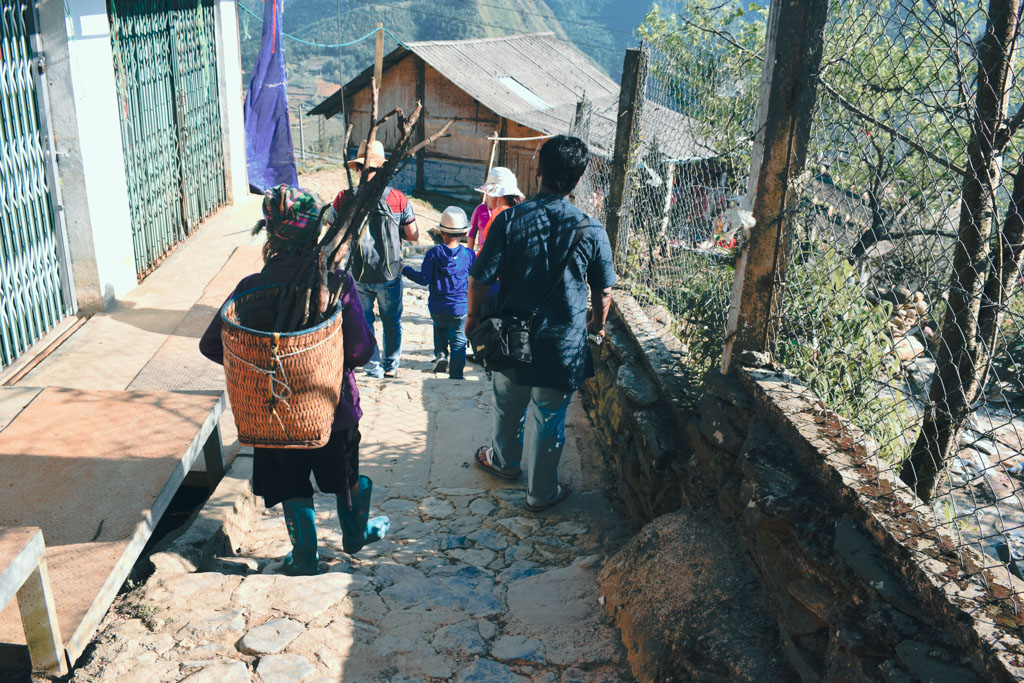
For the Art Aficionado, Visit the Sapa Gallery
Sapa Museum, one of the most well-known Sapa attractions, is situated among the pleasant hills and offers an enlightening excursion through time. This social repository is an interesting stop on your Sapa tour.
Sapa Museum transports you to the dynamic embroidered artwork of Sapa’s past the moment you enter inside its antiquated walls. As you stroll through the corridors, you will find relic telling stories of olden Vietnam.
It is free to enter and does not take more than 15 minutes to see and go through the exhibits displayed in English and French.
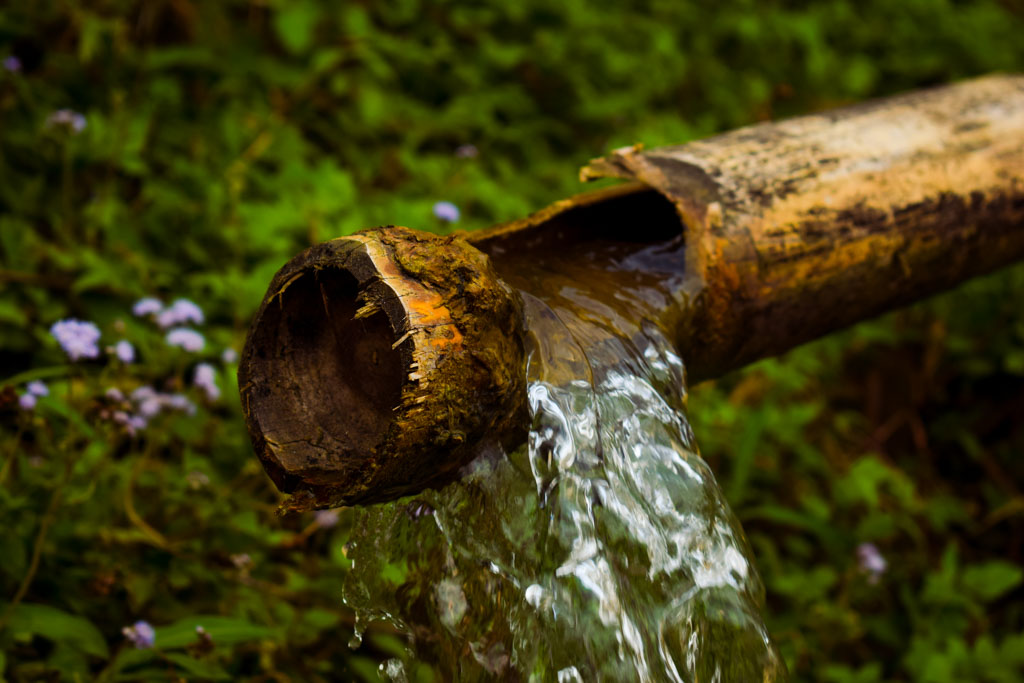
One of the exhibits that stayed in my memory was the Pan Pipe of Mong people. It is a flute but unlike the typical instrument, you bite it and make sound. It is an integral part of celebrations in the mountain tribes.
The museum uncovers the mysteries of Sapa’s ethnic tribes and features the rich diversity that makes Sapa in Vietnam different from others. Each display, whether conventional outfits, antique farming instruments, or intricate handiwork, mirrors the craftsmanship of the local communities. The Sapa Gallery welcomes you to dive profound into the social ethos, from hands-on textile weaving to ancestral workmanship.
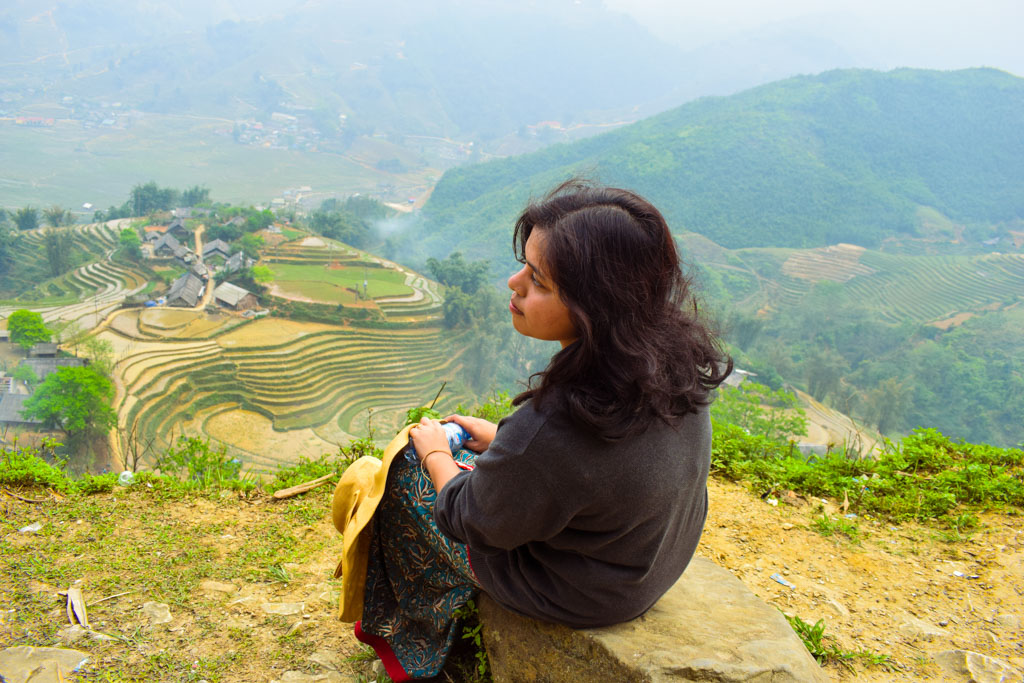
Also read: How to spend 2 weeks in Malaysia- a complete guide!
Rent a Motorbike and Explore Beyond Sapa
While trekking and day hikes will let you meet the Sa Pa mountain ranges at a personal level, you may choose to venture deep into the rural northwestern frontier of Vietnam by renting a motor bike from sa Pa down town.
To observe the magnificence of these rice terraces, go on a motorbike visit and travel south.
Many other local villages in Sapa are more authentic and less of a tourist trap than Cat Cat Village, and it is just reachable by motorbike. If you ride for 4 hours towards the north of Sa Pa, you will come across the Ha Giang and Hoang Su Phi. Many say as Sa Pa is getting saturated with tourists these offbeat villages are the upcoming destinations in the area.
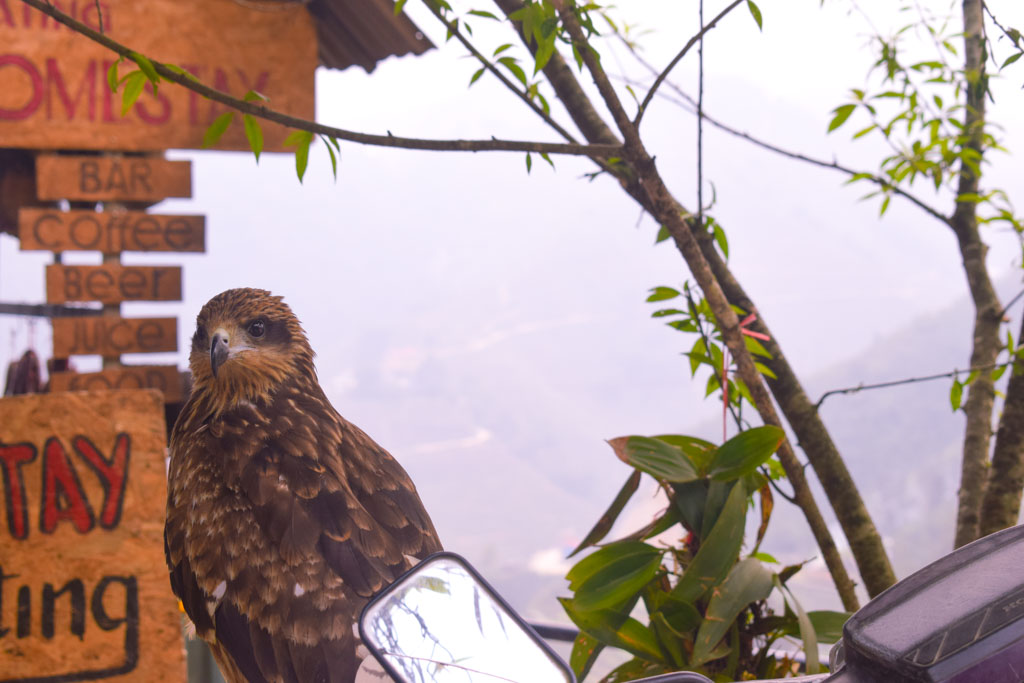
However, as you leave behind Sa Pa, you are further away from tourist infrastructure as well. While people are kind and gracious, you might also come across abject poverty and makeshift homestay arrangements. Hoang Su Phi is famous for a hike up the hill, Chieu Lau Thi (the second highest peak of Vietnam). This area is famous for Snow Tea. However, this adventure requires a longer stay in Sa Pa, in fact a night’s stay at Hoang Su Phi village.
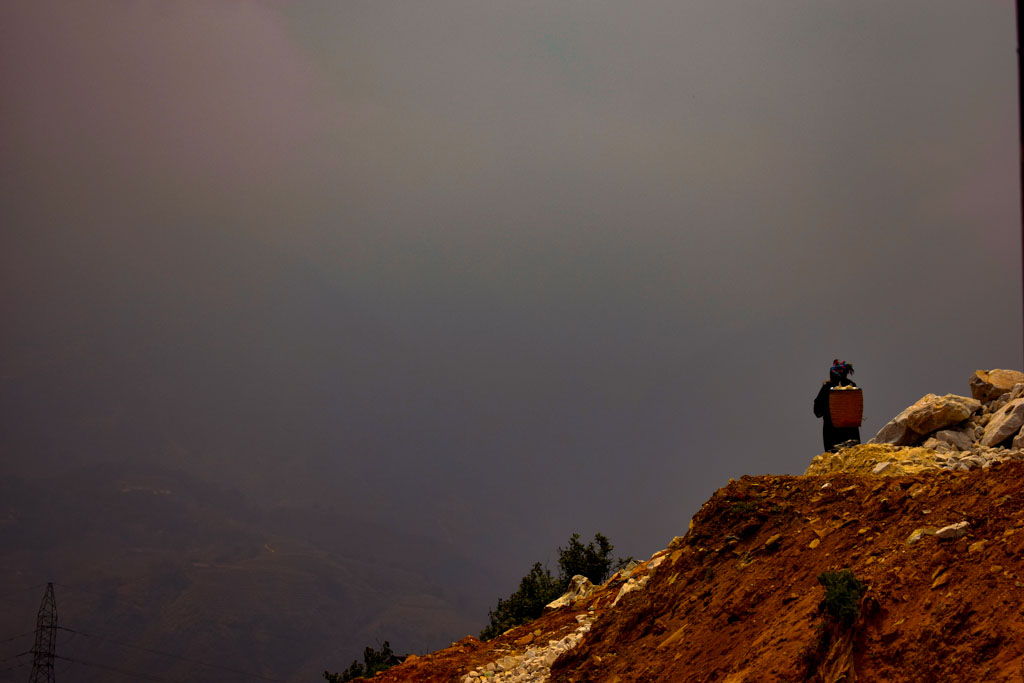
With a bike from Sa Pa to Hanoi, you can make a quick stop at Mai Chao village too, 4 hours off the town. This is a valley filled with small huts sharing acres of paddy fields hidden at the folds of sharp mountains. Many day trippers come from Hanoi to Mai Chao, which is home to the White Thai people.
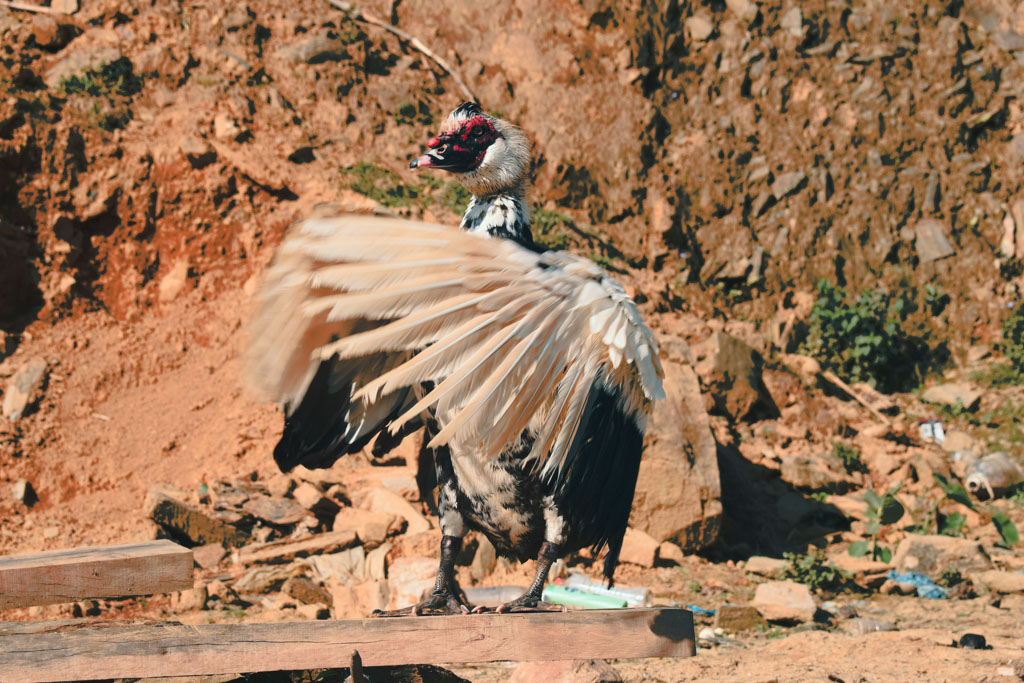
Pay a visit to the Mother’s Temple: Mau Son Temple
Among Sapa’s ethereal charms, a visit to Mau Son Temple is on the schedule of those looking for spiritual enlightenment. This peaceful sanctuary draws you towards its quiet greatness and spiritual heritage as you explore Sapa.
Mau Son Temple (also known as Sa pa mother temple) located at the banks of Red river and Nam Thi dates back to 200 years. It is dedicated to Princess Lieu Hanh who is believed to protect the nature of the mountains. Devotees visit till date, offer food and burn incense sticks.
The fragrance of burning incense wafts in the air as you rise the steps, driving you to the temple’s dynamic veneer. Inside, the wall paintings portray stories from different mythologies, enthralling your senses. The spiritual aura of the spot is discernible, whether you take part in the customs or just observe.
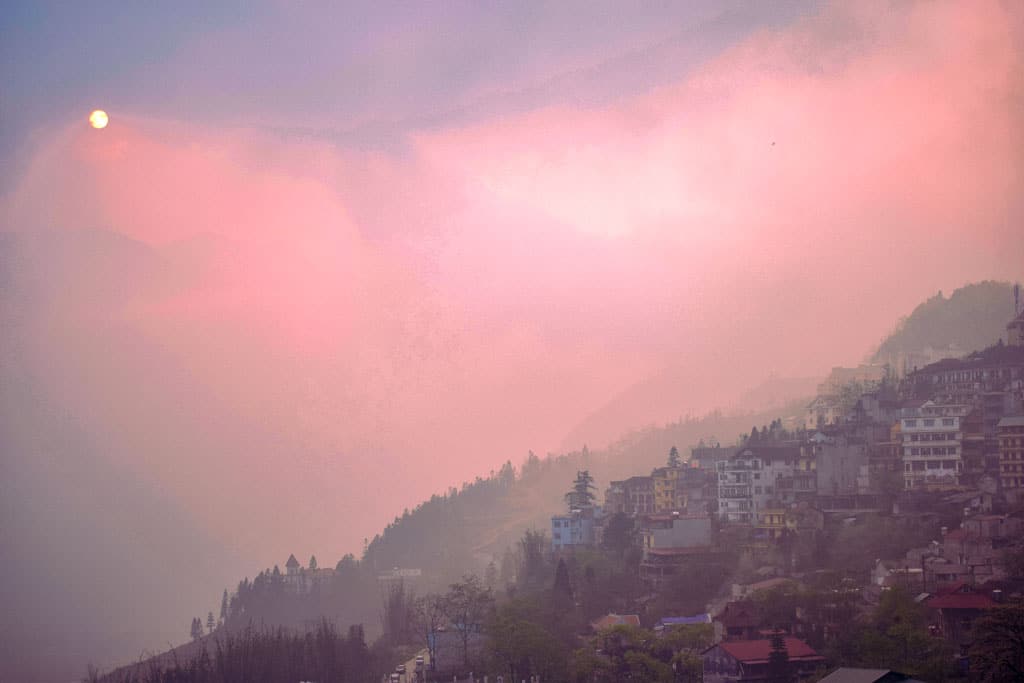
Where to stay in Sa Pa for the first time visitors
- Around the lake – The least expensive spot to book a room compared with similar quality rooms in the rest of the city. Sa pa lake is centrally located and decently connected however this is where all the day trippers arrive and stay. This is extremely chaotic and busy for the better part of the day.
- Cau May – Muong Hoa – is more costly than different regions because the view is stunning, including views of the Fansipan and Hoang Lien Son mountains.
- Center of Sapa Town – this area is full of good hotels, some are reasonably priced. Many caters to luxury clients.
- Homestay in Sapa – I had seen a family of white people with 3 children cross a wobbly rope bridge with suitcase on their head (head, yes you read that right) to reach their homestay located somewhere at Lao Cai village. Homestays in Sa pa is a great experience to live the local life in a rustic way, though things have improved a bit in recent years. However, I would recommend do your research and choose a homestay that caters to your basic needs, including a fully functional washroom.
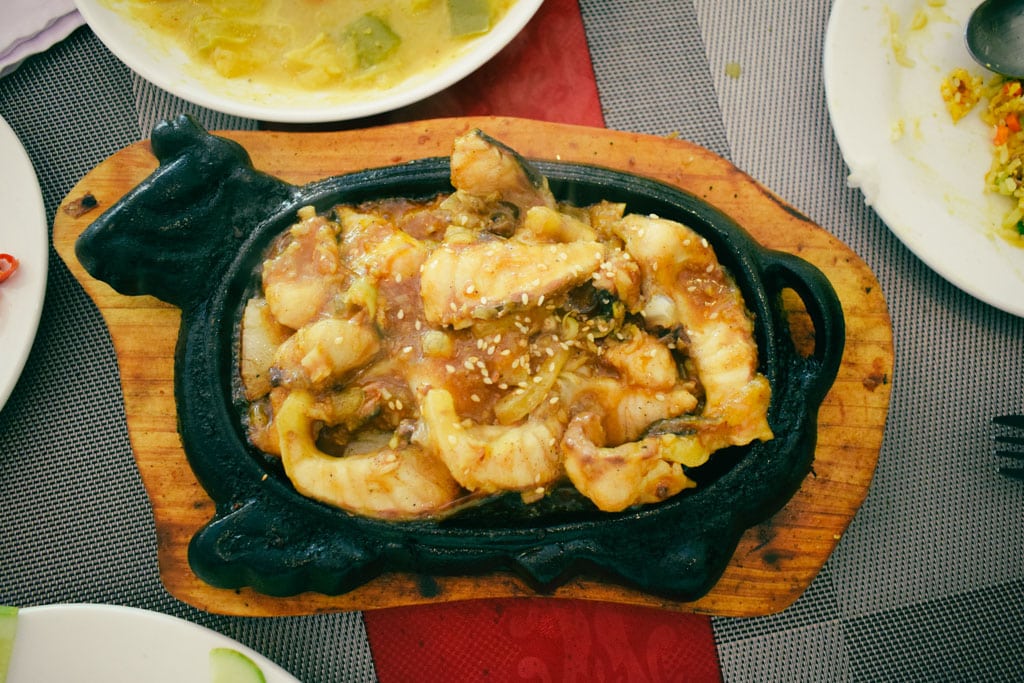
Best things to eat in Sa Pa- Offbeat experiences in Vietnam
Unlike the plains of Vietnam, Sapa offers a very rustic food experience. Like any developing mountainous region of the region, food is a scarce resource. Efforts are put in place to ensure every part of a cattle raised in the difficult terrain is put to the plate. Food preservation techniques are in place too.
Hmong have their own kind of charcuterie, which is basically buffalo jersey. Its a spicy food, sold in abundance at the Sa pa night market. For the cold winter months, the dried meat is a staple. You are ideally to eat this with a dash of lemon.
Gulp down the jerky with a glass of Tao Meo Wine, the Hmong whisky made of Tao Meo fruit (also known as Assam apples). This apples are grown naturally on Hoang Lien Son Mountain. This alcohol is aged between 8 months to a year.
I recommend a visit to the Hoang Minh restaurant for this.
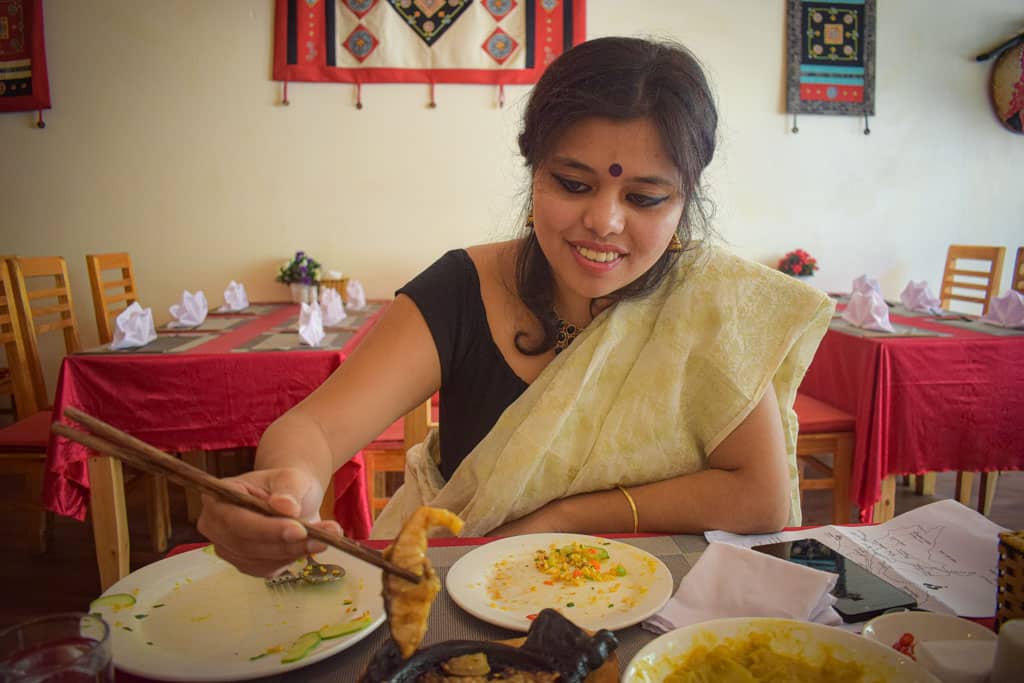
When you take the day trip to Lao Cai, you will find a number of different home grown wines served to the tourists. Not to forget the snake wine sold in abundance to the tourists in the big cities of Vietnam!
If you stay at the Homestays of Sapa, you may get to eat traditional local food of the tribes. It is easy to find vegetarian or vegan food in Sapa. Sticky rice is the ubiquitous staple. The seven colored sticky rice steamed in a leaf, or Com Lam (sticky rice cooked in bamboo tube) are famous of Sapa.
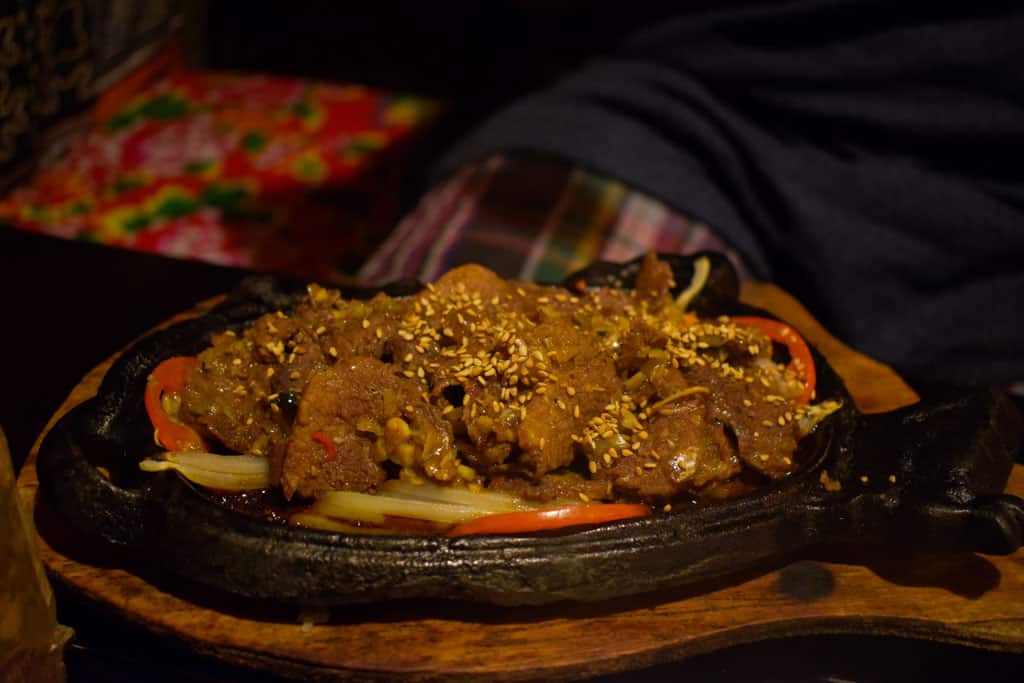
However, for the ease of tourists the homestays these day serve generic western food like pasta etc.
One of the wonders of implementing European aqua culture technique in Sapa has resulted in farming high yield salmon in the mountain streams of Sa pa. Sa pa salmon are firm fish with less fat and makes for a delicious hot pot treat. The best place to try Salmon hotpot in Sapa is Cho Tinh Quan – 22 Ngu Chi Son.
For various meat dishes, I would highly recommend a visit to the Hmong sisters bar (try the venison) and Little vietnam (must try the balck grilled pork with sticky rice).
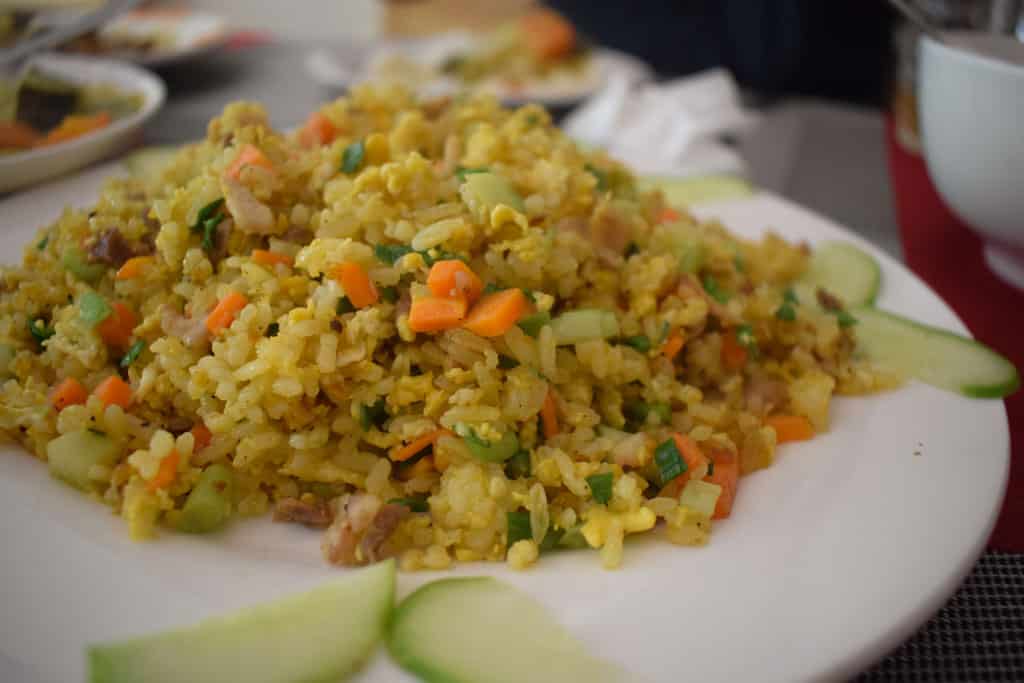
In recent years, Pi’s kitchen is another restaurant of repute at Sa pa downtown that serves local food in Sapa.
The Mong people of the mountains raise tiny pigs not weighing more than 5 kg. Arm pit pig is a specialty of their house sold as grilled pork at the Sapa night market. You will also find many varieties of chicken, the most famous of them being the black chicken believed to cure heart disease.
Look for wild pears, Sapa peaches and wild mushrooms.
Food in Sapa is not very spicy. The further you go from Mekong delta and near the border of China in general, you will find spice come down drastically in Vietnamese cuisine.
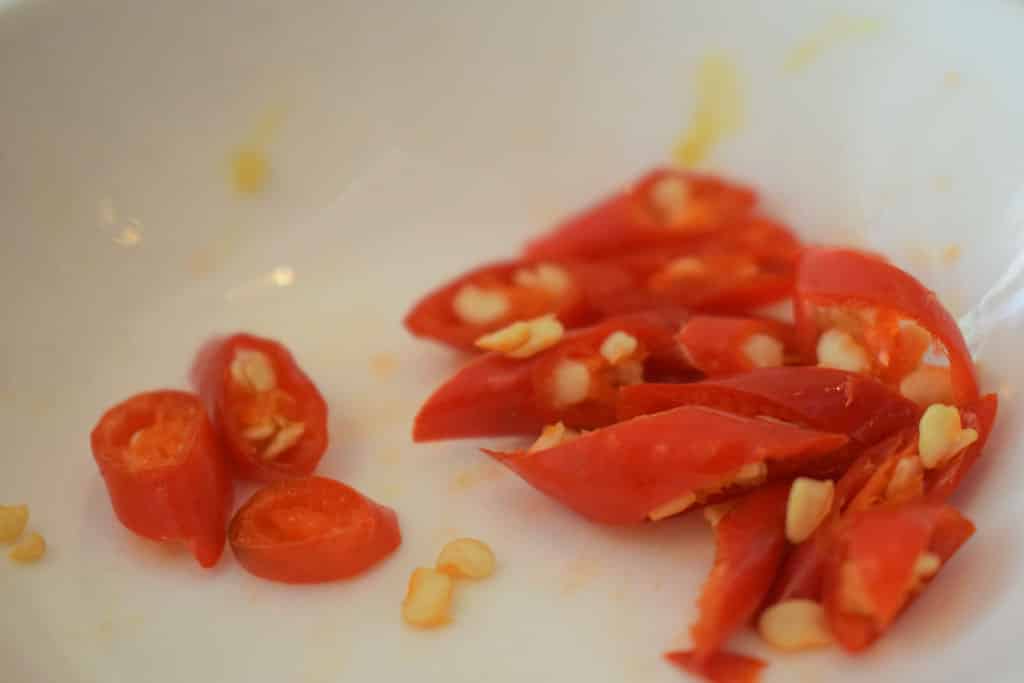
The inevitable Chinese influence is pronounced in the dish named Con Sui (Dry Pho). Rice noodles with a medley of crispy fried shallots, roasted peanuts, herbs, chili, beef, and a small bowl of flavored sauce is unique to Sapa.
During festival in Sa Pa, the Hmongs prepare Thang Co. It is a communal soup slow cooked overnight with many organs and intestines of buffalo and horses and multiple herbs grown locally.
Also read: The best biryani houses in Kolkata
Best time to visit Sa Pa
The rains bring lush green vegetation in the mountain but also makes the slopes slippery and risky for those hikes. The dry season is from October to March. The fields would be barren. The weather permits nice long hikes without getting drenched. Basically, you have to choose between greens and misty cloud and brown lifeless mountain terraces against a gorgeous sky.
There is a tiny time window in between when the terraces would still have rice plantation. Those months (March to September) are ideal for the money shot picture of Sa Pa. Please keep in mind these are also the months of rain, which would restrict your movement in the mountains to a large extent. Try visiting during the shoulder season for a cheaper rate of hotels and better weather.
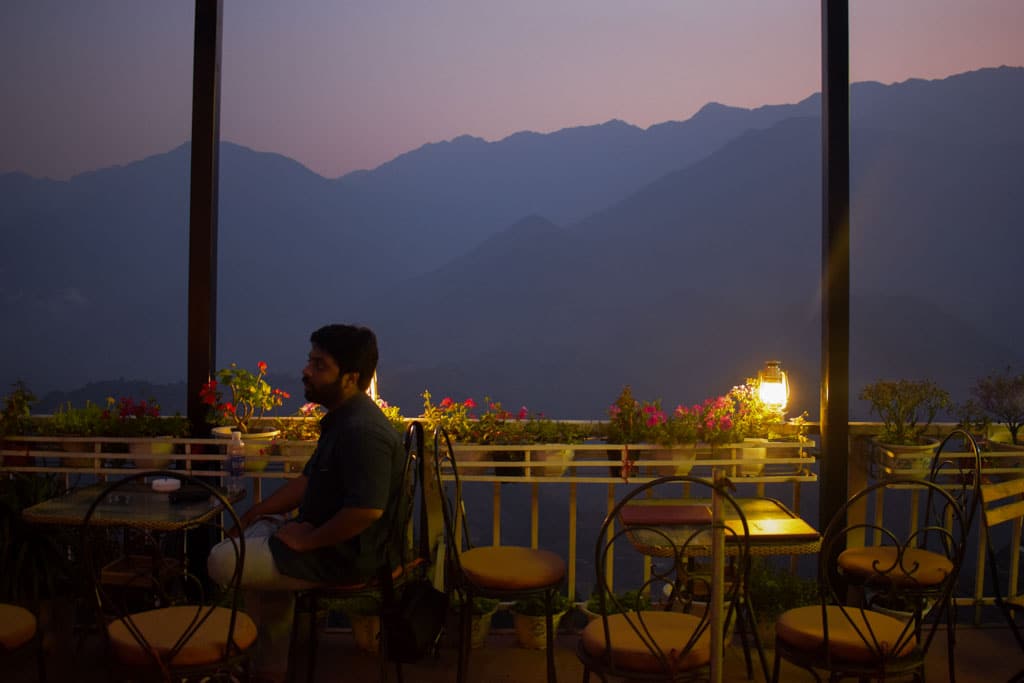
FAQs about making a trip to Sa Pa, Vietnam
- What is the most scenic route to Sa Pa?
Taking the night train is the most scenic and economical route to visit Sa Pa. The night train from Hanoi saves you on a night’s accommodation cost and takes you through the winding hills to the Sa Pa city center!
- Should I book a stay in Sa Pa homestays?
Only if you are going with a trusted guide or have done extensive research on the homestays in Sa Pa. Much like Nepal, Sa Pa is home to numerous lodges which run as Homestays but neither profit goes to the local community nor does the tourist get an authentic local experience. the Sa Pa night market is a better place to experience local culture of Sa Pa.
- How many days are good to spend in Sa Pa?
Anywhere between 3 to 5 days are good to spend in Sa Pa. There are one night halts in Sa Pa too but that way you do not really get to see the mountains at leisure. Allow a few days in Sa Pa at least to soak in the vibe.
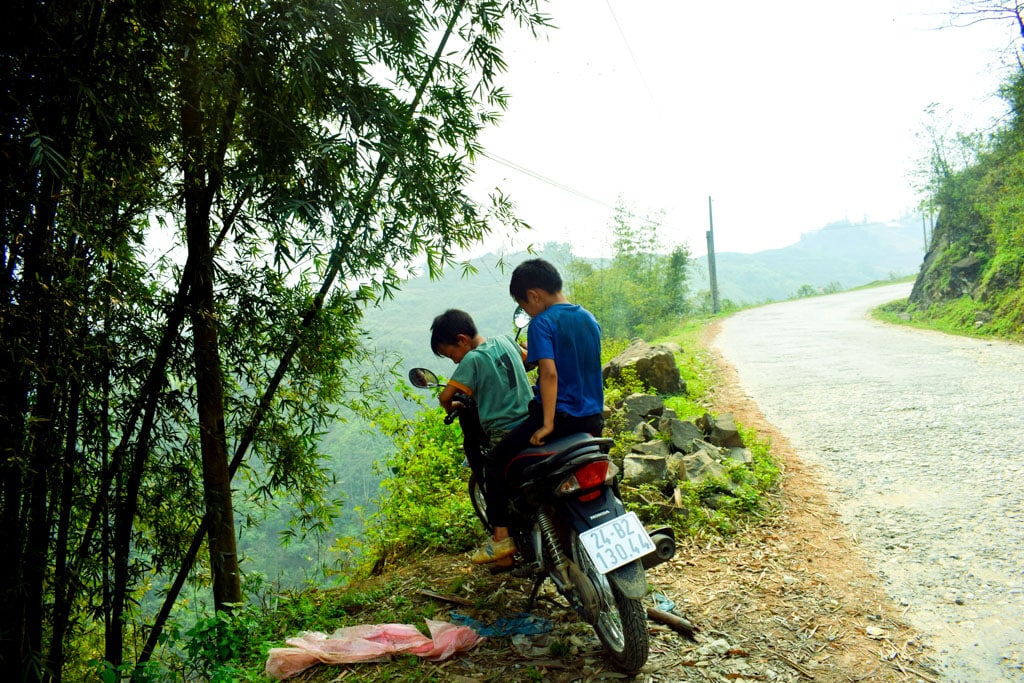
- Can you visit Sa Pa if you do not hike? Is it worth visiting Sa Pa if you do not hike?
There are many short day hikes if you are not into the grueling miles of hiking along the mountain ranges. You may also rent a bike and explore many places of the mountain pass that runs through the heart of Sa Pa.
- Is Sa Pa worth visiting? Has Sa Pa become a tourist trap in recent times?
If nature and culture are what attracts you, you would fall in love with Sa Pa instantly.
It is not a party town It is not loud. It lacks the glamour of a modern town. There are only a handful of activities in Sa Pa at night. Sa Pa is a tiny little hamlet in true sense. I loved her for all the simplicity and authentic experience. I would recommend a visit to Sa Pa for a first time visitor to Vietnam.
Unlike Hanoi or Hoi An, or the south of Mekong Delta, Sa Pa in Vietnam is not heavy on resources.
With recent surge of domestic tourism, Sa Pa has tried to imitate many tourism strategies of other successful destinations of Asia, including the Instagram gates of Bali. If you like those, you will probably love the Sa Pa city. However, if you are looking for pure unadulterated bliss of nature and profound mountain, slow down along the folds of the mountains where a few bespoke properties have designed peaceful abode in the cloud!
It might be a bit overwhelming dealing with the chaos and clatter of bus stand in Sa Pa as numerous local women will surround you and try to sell a tour or sign up for a homestay. The town is slowly perishing under the pressure of uncontrolled construction everywhere. Prices have sky rocketed. There is no regulation in place. I am stating these as full disclosure that visiting a hill station in a under developed area in SEA may not be all rosy but end of the day it would be worth it.
Will I go back to Sa Pa? Hell yes. But I will definitely not stay in the city. I will rent a bike and try to explore further down the road and click endless pictures of the paddy fields. May be I would also plan for a sunrise hike to Fansipan Summit.
Pin it for later!
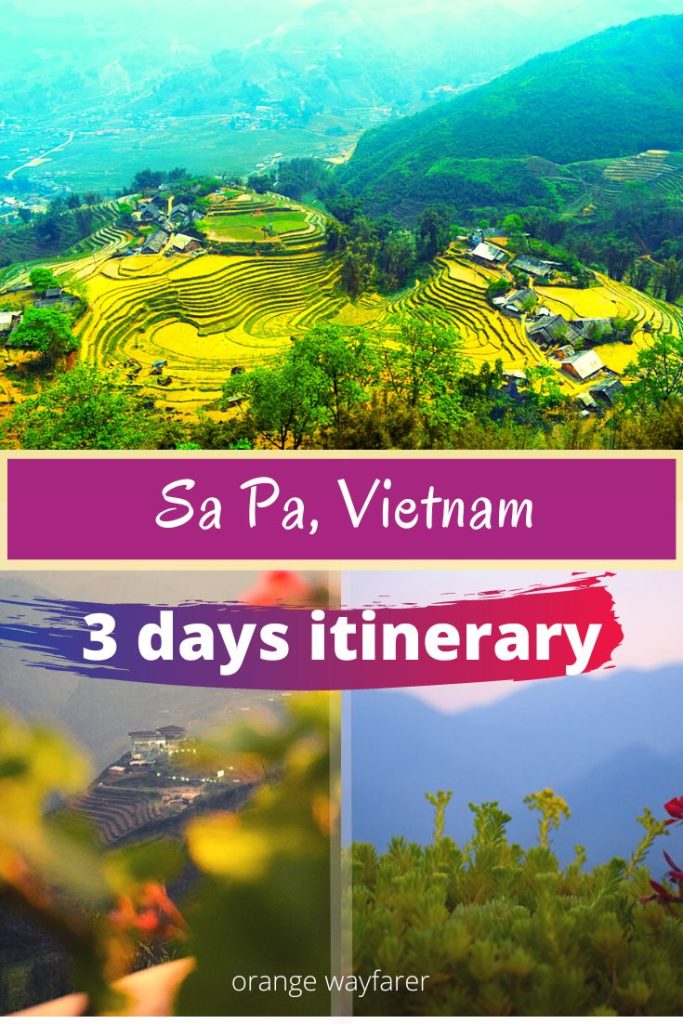
Let’s stay connected on Facebook, Instagram, Twitter, Youtube!
This post may contain affiliate links. Please read the disclosure post. If you have liked the article, you may support it by buying using these links without any extra cost to you.
One Response